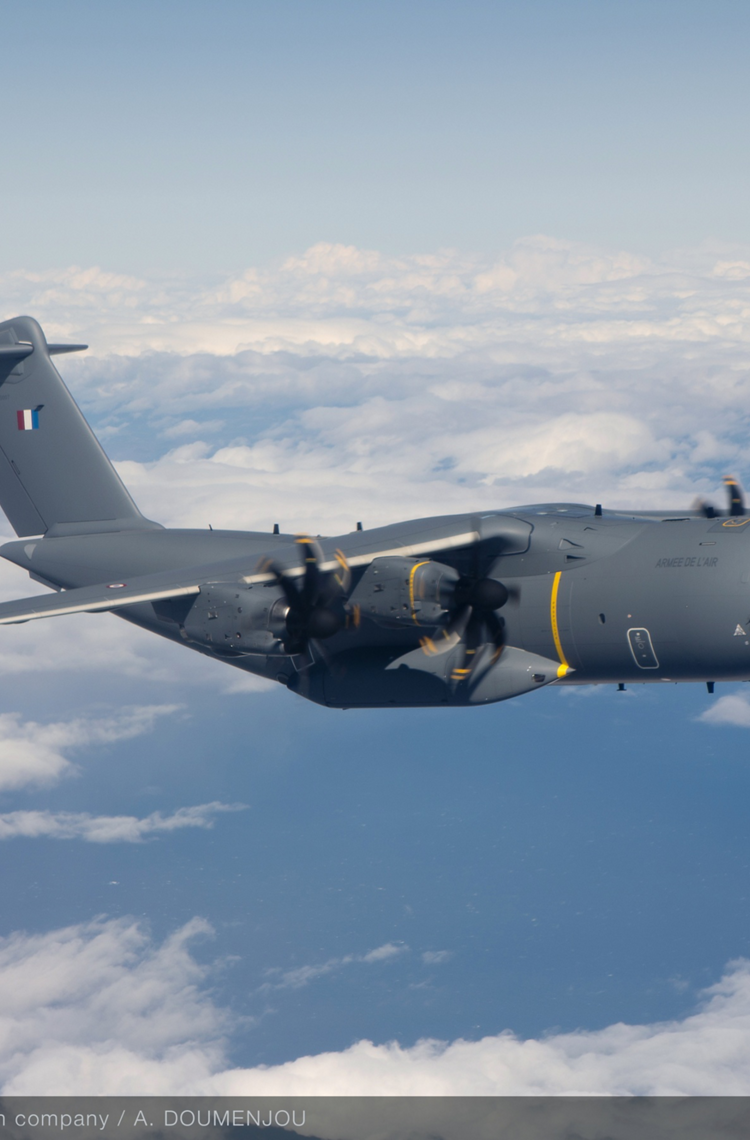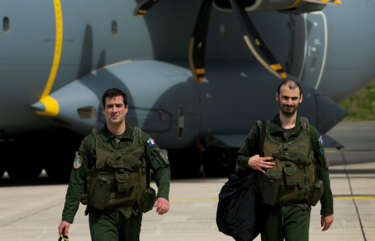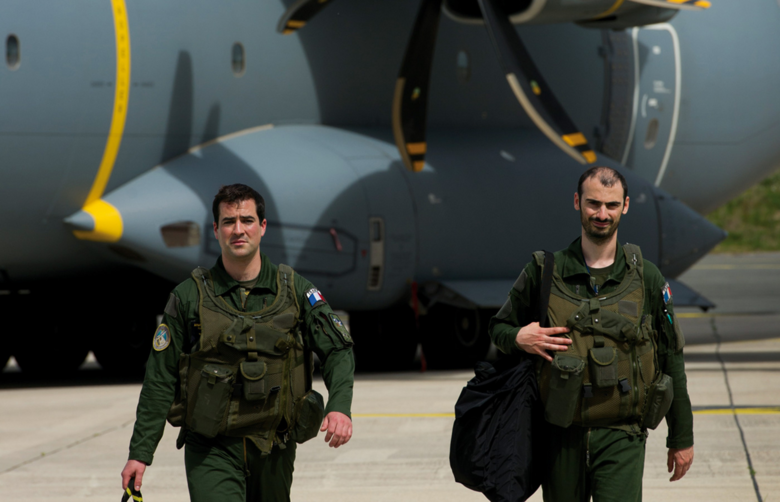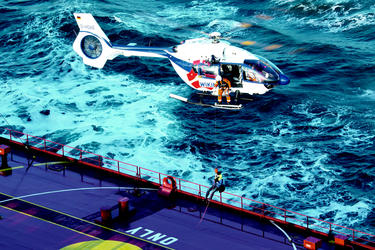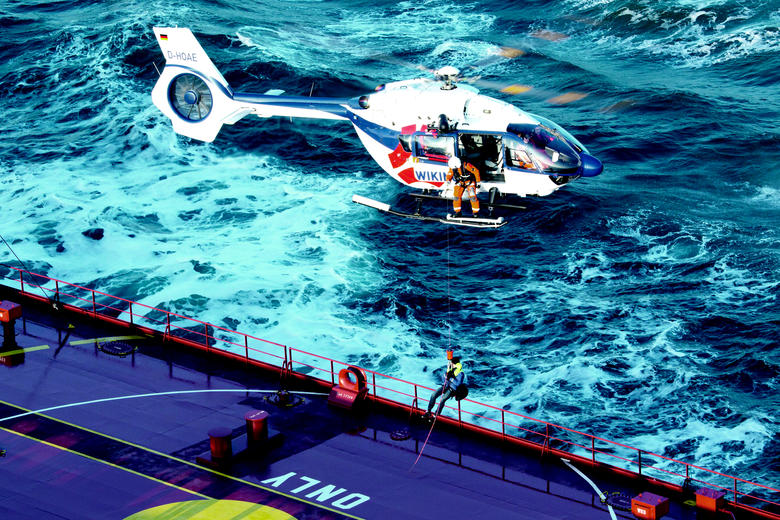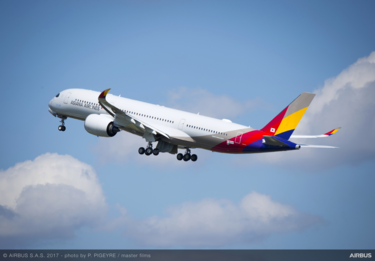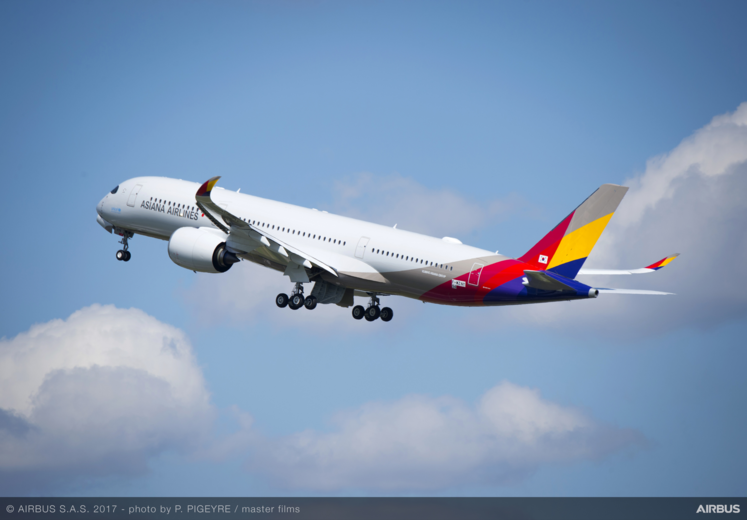From carrying troops and equipment to theatres of operation in Sahel and the Middle East, and dropping off marine pilots on ships in stormy seas to flying thousands of passengers safely to their destinations all over the world – crews of the French Air Force, German helicopter service company Wiking and South Korean Asiana Airlines explain how Airbus is helping them accomplish their missions every day.
Customer: French Air Force
Lieutenant Colonel Fréderic waits for the deafening roar to die down as an A400M flies at low altitude over the control tower. “Our A400Ms are already doing a great job, they are the vital backbone of our operations,” declares the commanding officer of the 61st Transport Wing. For nearly four years, the 11 military airlifters of the Wing stationed in Orléans-Bricy have delivered troops and equipment for the French Armed Forces’ Operation Chammal in the Middle East and Operation Barkhane in Africa on a daily basis. Inside the 340m3 cargo hold of A400M MSN33 (Manufacturing Serial Number), loadmaster Chief Technician Romain is busy stowing the rollers that can be used to transport two armoured vehicles. The aircraft is large enough to accommodate an NH90 helicopter or 116 troops. There is also space for 66 standard NATO stretchers and 25 seats for medical personnel, transforming the aircraft into a flying hospital. “The cargo hold is like a giant Lego set everything is designed to make our life easier,” Romain explains.
Captain Ronan, a pilot in the 1/61 Touraine squadron, a unit belonging to the 61st Transport Wing, is also proud to fly the A400M. Ronan loves the agility of the aircraft, he says: “The fly-by-wire flight controls make it unbelievably manoeuvrable.” Another big advantage is its powerful engines. “Thanks to them, we can carry enormous loads at incredible speed, enabling us to rapidly respond to crisis situations all over the world.” Lieutenant Colonel Fréderic is now looking forward to using the aircraft’s tactical capabilities. “With these,” he says, “the A400M will be an incredibly sophisticated aircraft, able to take-off and land on unpaved airstrips, defend itself against missiles, carry out airdrops and perform air-to-air-refuelling.”
Customer: Wiking Helikopter Services
A thousand kilometres away from the A400M, over Helgoland, Lars Hilgert (above), pilot and flight operations manager of Wiking Helikopter Services, is about to drop a marine pilot onto a container ship. Despite the icy winds and mighty waves, Hilgert holds the H145 at a steady hover just metres above the deck. He needs less than two minutes to complete the approach, hoist operation and departure.
“With the multifunction display and first limit indicator in the Helionix cockpit, I have all the important information and, in case one of the engines should fail,” says Hilgert, “I can see the available power and concentrate on the mission.” The 4-axis autopilot and auto-hover function also help, especially at winds of up to 32.7m per second.
Wiking has completed more than 55,000 accident-free transfers. “Extremely high standards in terms of safety, performance and cost-efficiency apply to offshore operations,” explains Hilgert. That’s why he thoroughly tested the H145 before deciding to add it to the fleet last autumn. “We’re looking forward to the delivery of our second H145 in October,” he says, adding that the collaboration with Airbus has been exceptional. “Even though we’re a smaller company, we always feel well looked after.”
Customer: Asiana Airlines
Nam-sik Hwang, the first Asiana Airlines pilot to fly the airline’s new extra-wide A350 XWB, is as enthusiastic about “his” Airbus as Ronan and Hilgert are about theirs. “We believe the A350 XWB, the essence of Airbus’ cutting-edge technologies, is an aircraft that fully provides the convenience and safety needed to help the crew focus on operations in a more pleasant environment,” he says on the A350 XWB’s first commercial flight from Incheon to Manila. The crew certainly appreciates the comfort offered on board. “The cabin looks much wider especially in business class, as there is no central overhead bin,” says Hye-sun Shin, while her colleague Kung-yoon Kim picks up on the quality of the air-conditioning saying, “The A350-900 certainly offers higher cabin humidity – my skin won’t get dry, even during long-haul flights.”
The A350 XWB gives passengers the calm, quiet, comfortable journeys they want – and the space they need. “The fuselage and windows are almost vertical so there is more space above my head,” one says. Combined with the fuel efficiency of the A350 XWB that means a commercial advantage for Asiana Airlines in its region’s highly competitive long-haul market.
Discover more news
Continue Reading

France orders Airbus VSR700 uncrewed aerial system
Press Release
Helicopters
The French Armament General Directorate (DGA) has awarded a contract to Airbus Helicopters and Naval Group for the production of six VSR700 UAS.
Ghana places first order for multi-mission Airbus helicopters
Press Release
Helicopters

Recycled and ready
Web Story
Innovation
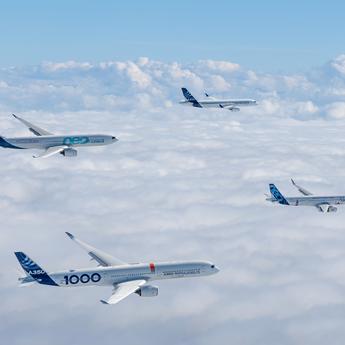
Airbus reports 793 commercial aircraft deliveries in 2025
Press Release
Commercial Aircraft

Driving innovation at Airbus Helicopters
Web Story
Helicopters
